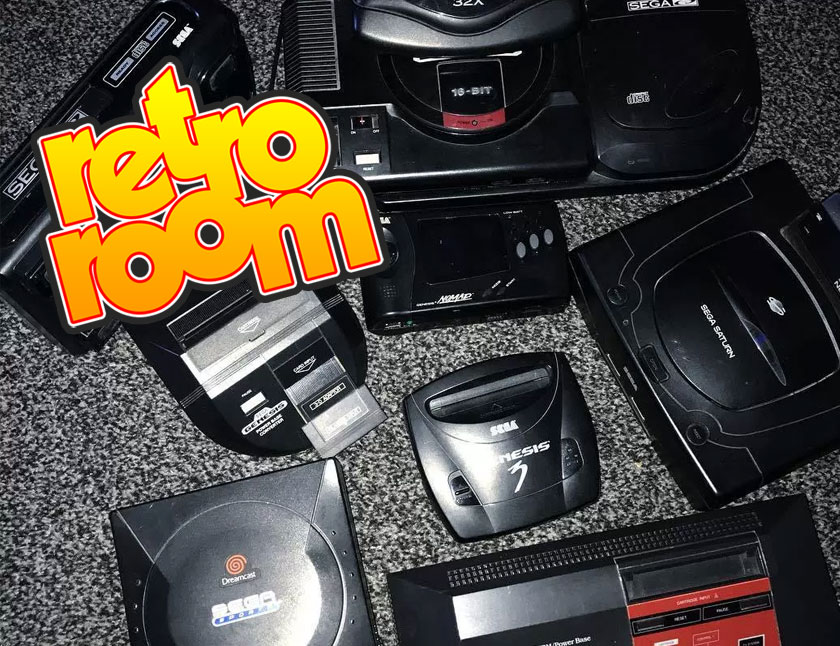A guide to Sega hardware iterations and variants, part 1 (Master System, Genesis and expansions)
Sega was the first challenger to Nintendo in the video game market. While they started out as a huge underdog, they eventually rose to be a worthy, more mature competitor to Nintendo's more family-friendly image.
Through their history, Sega has released four home consoles and one handheld system. As with Nintendo, there were quite a few variations and hardware revisions of Sega machines, so lets take a look at their product line.
Sega Master System
Original Model
The master system was the first Sega machine to get a wide release. While not terribly popular in North America, it experienced strong success in Brazil. The original system included a built-in game called Snail Maze that you could play if there was no cartridge inserted. There was a second slot for the less expensive 'card' games that were released on the console, and ports for accessories like the 3D glasses.
Model 2
The model 2 was a drastic redesign of the system meant to reduce cost and therefore, sell at a lower price. These systems also included a built-in game, either Alex Kidd in Miracle World or Sonic the Hedgehog. The model 2 removed the card slot and ports, so the 3D glasses and card-based games do not work on this model.
Sega Genesis
Model 1
After the humbling defeat of the Master System, Sega brought their successor to market nearly 2 years before Nintendo's follow-up system was available. With far more power than the 8-bit systems, the 16-bit Genesis was a huge advancement in gameplay and presentation.
Model 2
The first revision of the hardware changed the size and shape of the system drastically and removed the volume slider, which always seemed like an unneeded option.
Model 3
The third version of the Genesis was a massive redesign, going for a strictly budget approach and was released by third-party company Majesco instead of Sega themselves. The form factor was drastically shrunk down and was the smallest console we had ever seen at that point. Being a budget revision, there is no expansion slot so the Seag CD is not compatible with the model 3.
Sega CD
Model 1 (slot loader)
The first version of the Sega CD was designed to dock beneath the Genesis model 1, but could be made to work with the model 2 as well. The front loading tray mechanism was really cool, but this model is famously unreliable.
Model 2 (top loader)
The second version was designed to dock to the right of the Genesis model 2, but similarly could be fit to work with a model 1. The disc loading mechanism was simplified into a basic top loading model that was far more reliable than the first version.
Sega 32X
The second expansion for the Genesis was the 32X module that plugged into the cartridge slot to increase the processing power of the Genesis. Games developed for the 32X did not work without this expansion, and it required its own power supply.

If that wasn't enough, Sega was even developing a standalone 32X console, codenamed the 'Neptune', though it thankfully never made it past the R&D stage.
Sega CDX
As if the already overwhelming number of console revisions and expansions wasn't already making consumers heads spin, they released the comprehensive Sega CDX console, which was a special model Genesis with a Sega CD built-in. It was also slightly portable, if you wanted to use it as a portable CD player. Most gamers will claim that the sound quality of this model is far worse than the previous models, but being a rarity makes this highly collectible and sells in the $200 range today.
JVC X'Eye
Yet one more combo system exists in the JVC X'Eye. This console was a combination Genesis and Sega CD, much like the CDX, but in a full-size console format. Its a fairly rare system, having sold very poorly.
This concludes part one of this guide. In part 2, we'll look at the Saturn, Dreamcast and Sega's handheld consoles.
More articles from the Retro Room hardware guide series:
- Nintendo consoles part 1 (NES, SNES and N64)
- Nintendo consoles part 2 (Gamecube, Wii and Wii U)
- Nintendo handhelds part 1 (Game Boy, Game Boy Color, Game Boy Advance)
- Nintendo handhelds part 2 (DS and 3DS)












Years had passed and still I was not able to acquire one. =(
Still looking for these diamonds on garage sales.